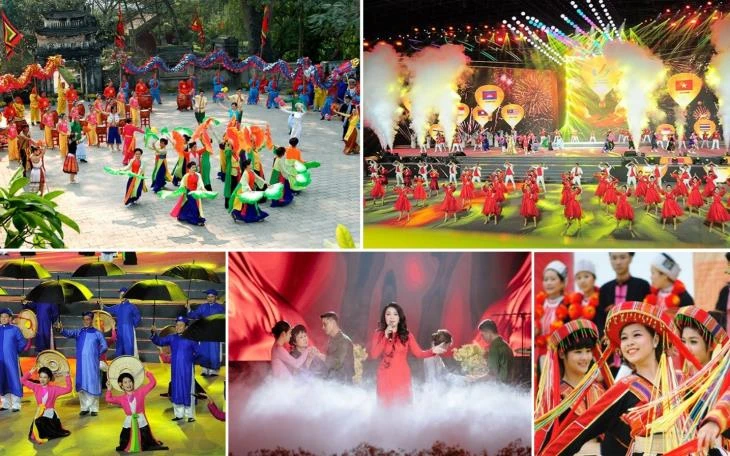Recently, the inter-regionality in exploiting heritage values has been paid special attention to by functional sectors and localities.
A representative from the Ministry of Culture, Sports and Tourism said at a meeting in September 2023, the dossier for the registration of Ha Long Bay-Cat Ba Islands on the list of World Heritage Sites, will be officially considered by UNESCO. Notably, this scenic cluster is located in Quang Ninh Province and Hai Phong City.
According to Assoc. Prof. Dr. Dang Van Bai, Vice Chairman of the National Heritage Council, the current general trend is that the linkage dossiers will be more and more, both in terms of tangible and intangible heritage.UNESCO also promotes multi-national and inter-provincial heritages.
It can be seen that over the recent years, many localities have been timely grasping the inter-regional trend in heritage exploitation and promoting the trend in practice. For example, during its process of developing and implementing the idea of nominating the title of World Heritage for Yen Tu Complex in Uong Bi and Dong Trieu District, Quang Ninh Provincial authorities discussed and worked with neighbouring provinces, to expand the scale of the nominated heritage to the western part of Yen Tu (in Bac Giang Province) and Con Son – Kiep Bac relic site (in Hai Duong Province).
Accordingly, this heritage cluster covers more than 70 relics, associated with the typical religious and cultural space of the Truc Lam Zen sect.
These above examples showed that inter-regional heritages,which are spreading from more than two provinces and cities or more, will mobilise resources and the participation of relevant localities.
As a result, the strengths of the localities owning heritages will be promoted, while ensuring the scientific criteria set by UNESCO for a world heritage site.
Thanks to the close and effective coordination amonglocalities and regions, the exploitation of the values of inter-regional heritages will also be multiplied, instead of being confined to only one province or city.
This approach helps to stimulate localities to strengthen linkages, cooperation and support together, promote sustainable development, effectively exploit available potentials, and create diverse and competitive tourism products.
However, besides the existing strengths, the conservation, operation and management of inter-regional heritages, have also been posing many challenges, which need special attention and solution by localities. If there is a lack of close and synchronous coordination among the localities, the inter-regional heritage chain will quickly be broken, causing many unpredictable consequences.
















